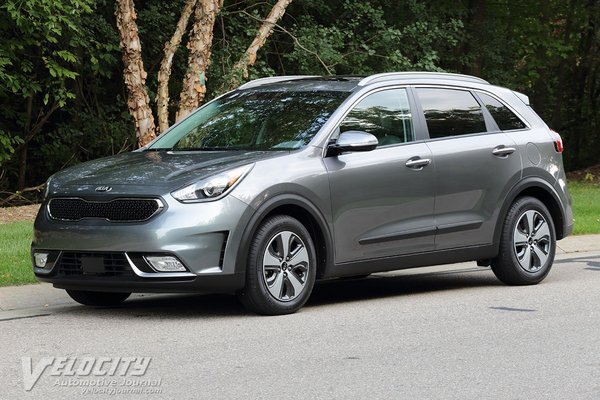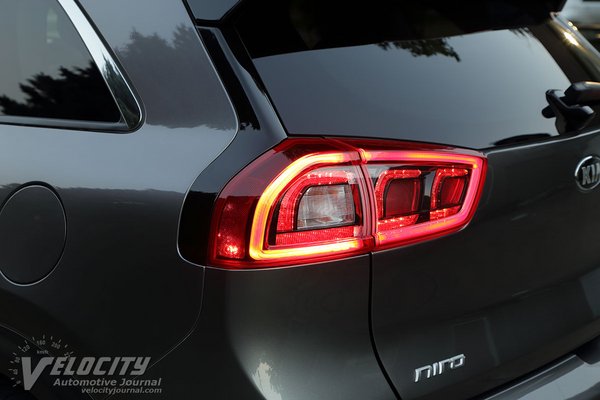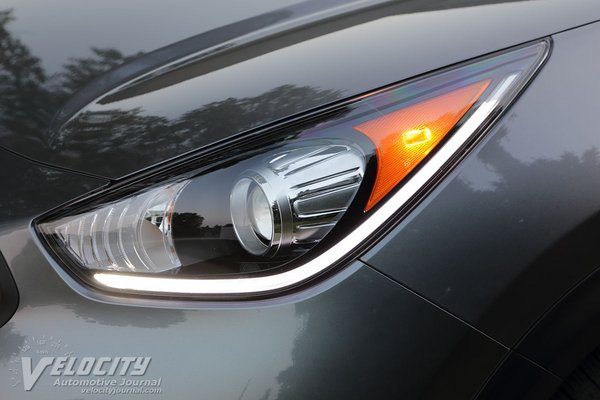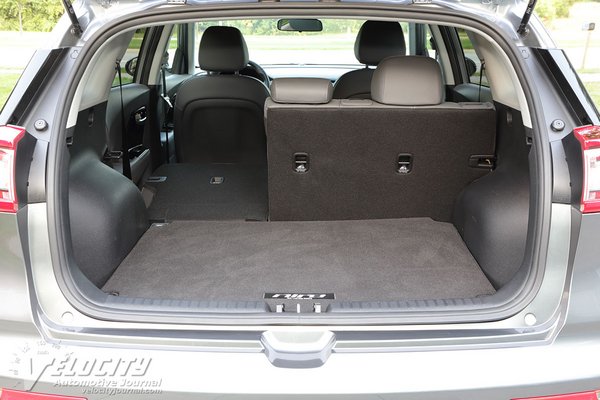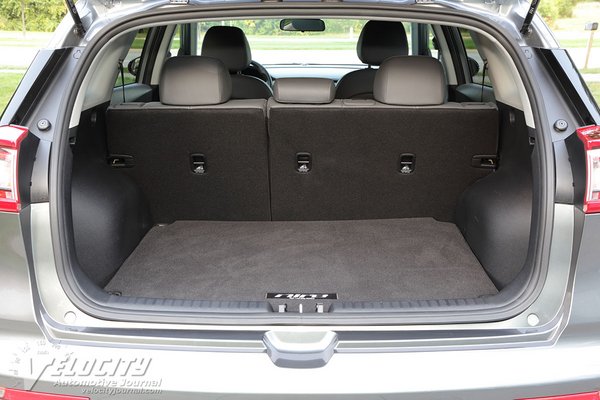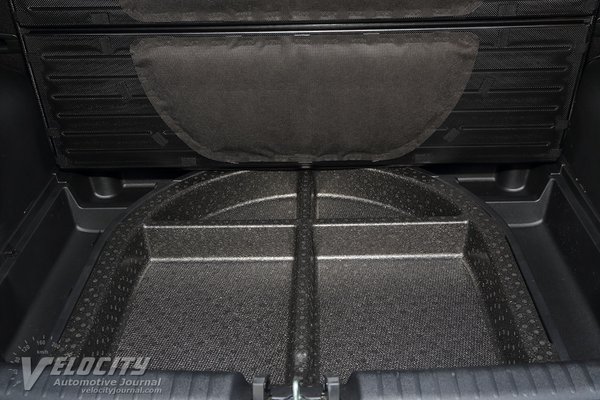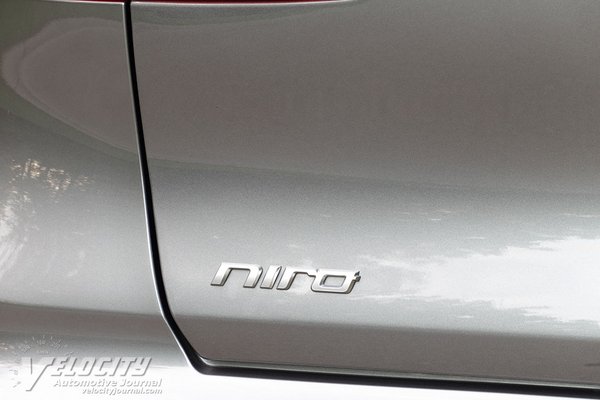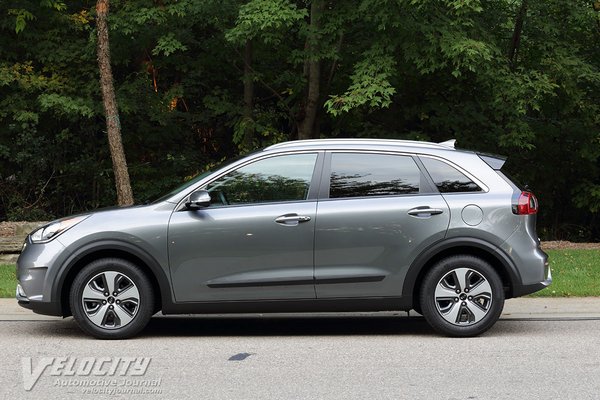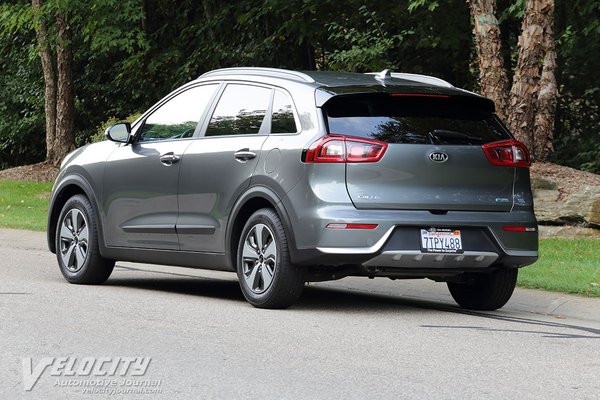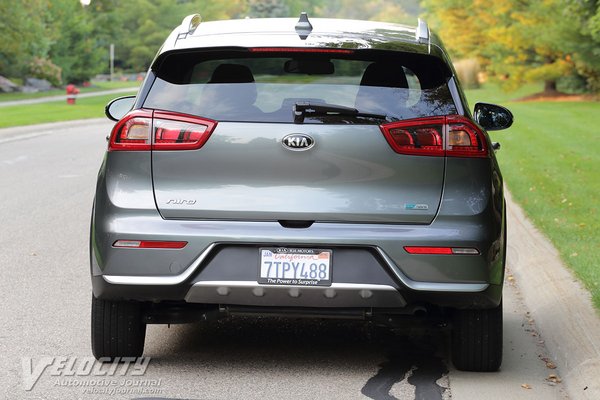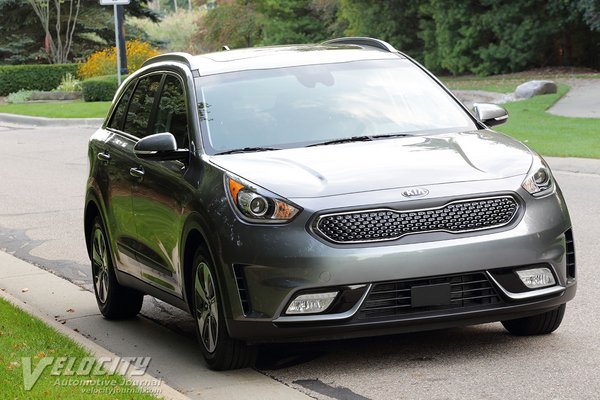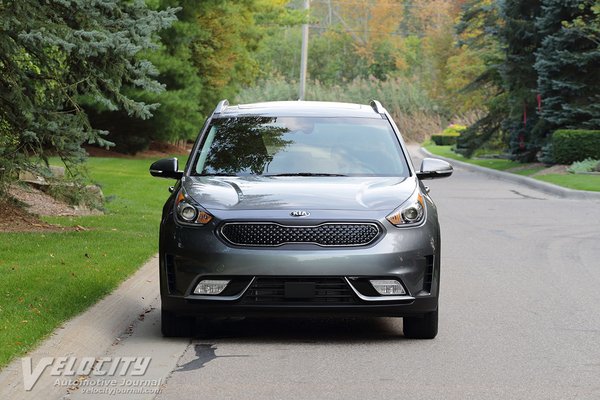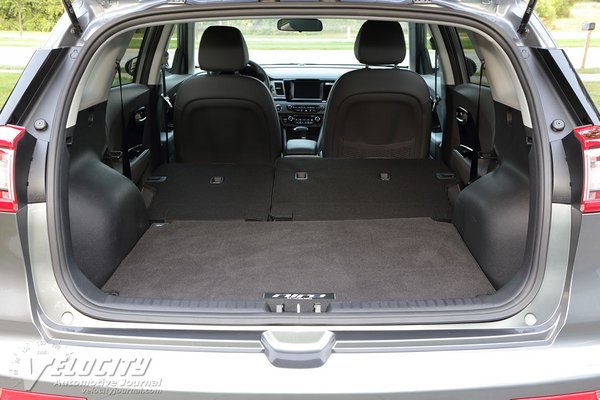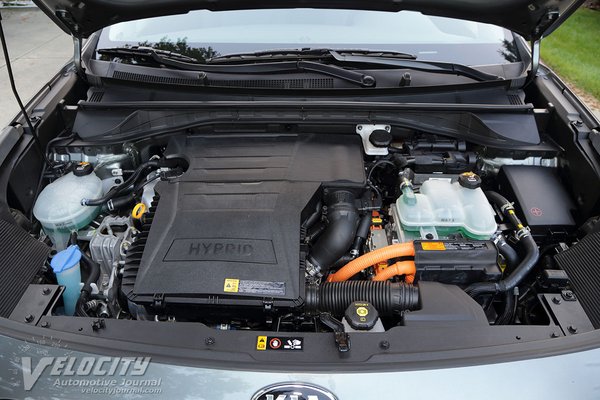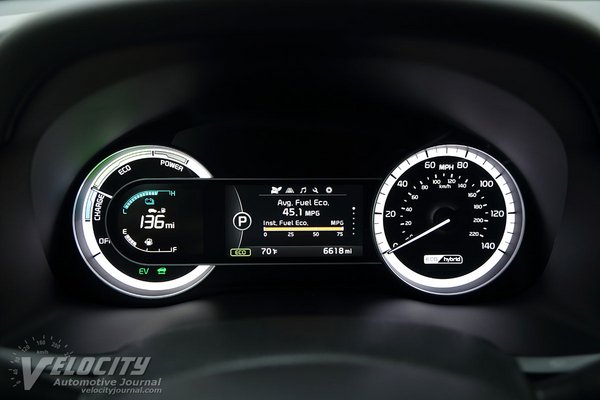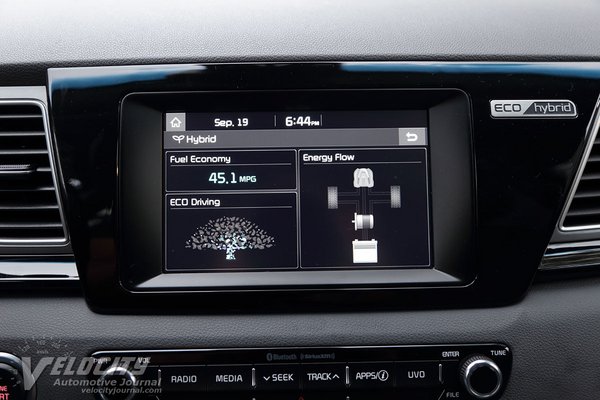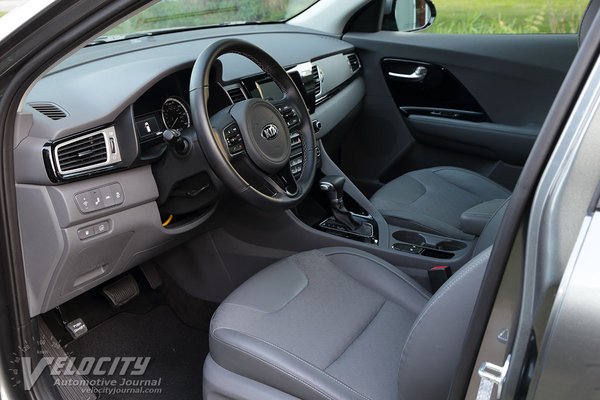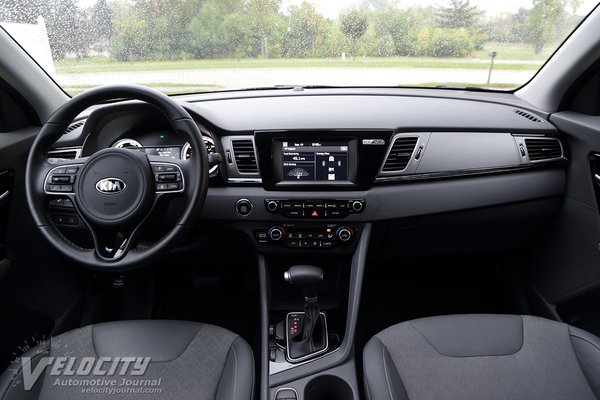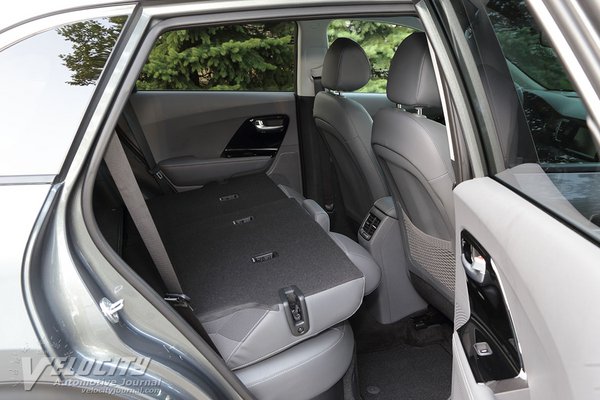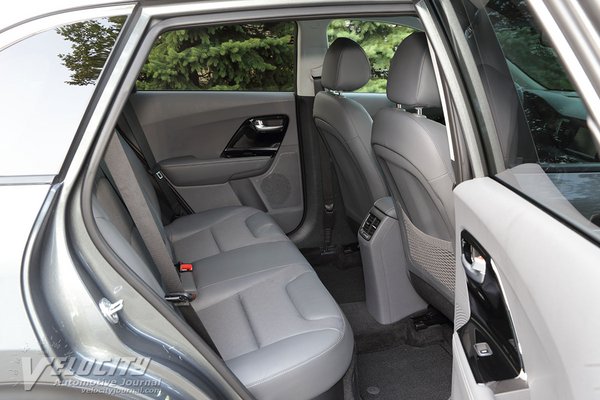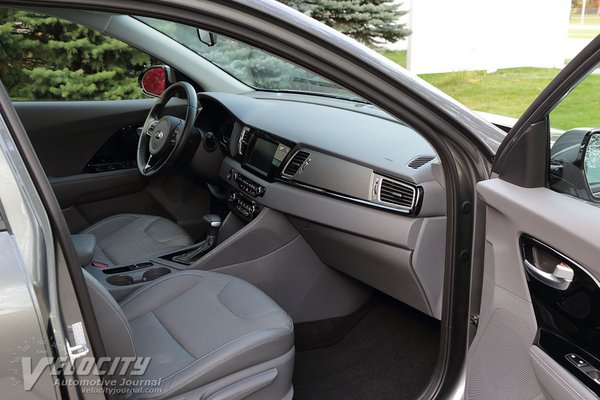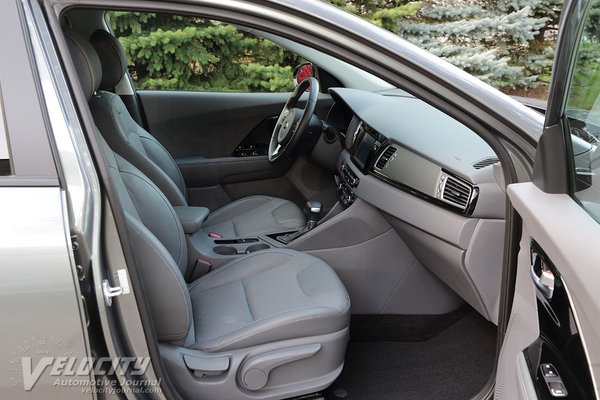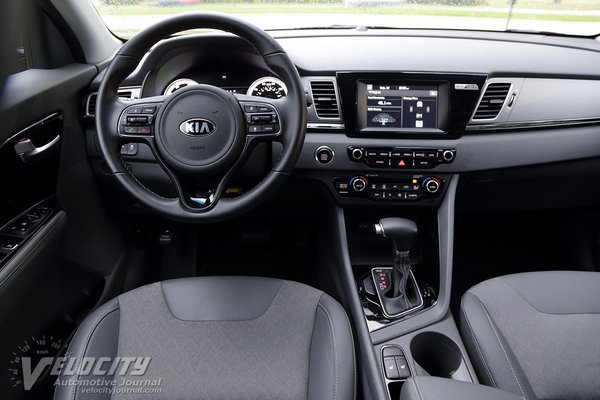2017 Kia Niro
11/20/2017
Shahed Hussain
Although gasoline costs seem destined to remain affordable in the near future, hybrid SUV models are becoming more commonplace. Kia's first entrant into the hybrid SUV segment is the 2017 Niro.
Available in four trim levels, starting with the Niro FE ($22,890) and topping out with the Touring ($29,650), Kia has priced the Niro comparably to non-hybrid compact SUVs from other manufacturers. For 2018, pricing has risen slightly to $23,240 for the Niro FE, but the Touring is significantly more expensive at $31,900. Our test vehicle was a 2017 Niro EX with a MSRP of $25,700. Including the sunroof and advanced technology package added another $2,300 to the sticker price. The total came to $28,895 including the $895 freight & handling fee.
All Niros are powered by an Atkinson-cycle 1.6L inline four and AC motor mated to a 6-speed dual-clutch automatic gearbox driving the front wheels. The direct-injected all-aluminum dual overhead cam four is rated at 104 hp @ 5,700 RPM. Torque output is 109 lb.-ft. @ 4,000 RPM. A 240V AC synchronous motor adds 43 hp and 125 lb.-ft. of torque, fed by a 6.5 Ah lithium-ion polymer battery. Battery power is rated at 42 kW. Combined system horsepower is 139 hp with a substantial 195 lb.-ft. of torque. The Niro EX achieves an EPA fuel consumption ratings of 51/46 MPG (city/hwy.), but the Touring is significantly less fuel efficient with a 46/40 MPG (city/hwy.) rating. We averaged about 46 MPG in mostly highway driving, so the EPA estimate seems reasonable.
The Niro's suspension is the typical MacPherson struts with a stabilizer bar in front. At the rear is a multi-link setup with gas-charged dampers and coil springs. Steering is rack-and-pinion with electric motor assist. The Niro's steering is geared for a relatively slow 2.85 turns lock-to-lock. Brakes are all-disc with regenerative braking via motor polarity reversal which recoups energy to charge the battery. Alloy wheels (16-in. diameter) are shod with P205/60R16 Michelin Energy Saver all-season tires. Optional 18-inch diameter alloy wheels with P225/45R18 tires are available on the top Niro Touring model. Curb weight ranges from 3,106 to 3,274 lbs.
Inside the Niro, Kia designed an interior in gray and gloss black accents on the doors, dash and center console. The dash is padded, but most other panels are hard grained plastic. As with many hybrids, the tachometer is replaced by a powertrain status gauge. A speedometer, trip computer, segmented fuel and battery charge meter complete the gauge cluster. Kia resisted the temptation to bury essential functions within the infotainment system. Instead, infotainment and HVAC controls are logically arranged on the center stack with knobs and buttons for quick adjustments.
The front seats provide decent lateral support and comfort. Even with the sunroof, headroom is acceptable for occupants up to 6 ft. tall. Rear seats offer reasonable comfort, along with ample headroom and legroom. The middle seat is tolerable for short trips, but the hard seatback is likely to cause complaints.
Although the Niro's primary mission is fuel efficiency in a practical package, Kia clearly tuned the Niro's suspension to be a competent long distance cruiser. The Niro's superb stability above 80 MPH was impressive for a compact SUV. Wind noise is hushed to reduce occupant fatigue. The firm ride and tight damping maintain chassis composure on the highway, without undue ride harshness over patched pavement. The communicative steering and moderate assist keep the driver informed of road surface conditions, without requiring constant steering corrections.
The Niro adopts stop-start (the engine turns off when stopped) to reduce fuel consumption and emissions. At low speeds and during initial acceleration, the powertrain may operate in pure electric motor drive mode. The Niro's acceleration with the transmission gear selector in "D" was sluggish at midrange and highway speeds, due to minimal electric motor assist. Selecting "S" or manually shifting gears unleashed noticeably improved performance. The Sport mode enables increased electric motor assist to increase low speed torque and better throttle response. We preferred the shifter in Sport mode for most driving conditions to keep pace with normal urban traffic. The 6-speed dual-clutch gearbox shifts smoothly during acceleration, but braking at low speeds results in some jerky motions as the regenerative braking seems to clash with transmission. We also noticed that below 10 MPH increased brake pedal effort was necessary as the regenerative braking system phased out.
The Niro is among the few compact hybrid SUVs available at an affordable price point. Kia has optimized the powertrain to deliver impressively low fuel consumption, with few compromises in drivability. Although this is a niche segment at this time, future government fuel consumption mandates will likely boost sales of hybrid SUVs globally.

